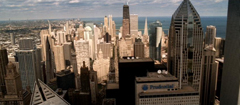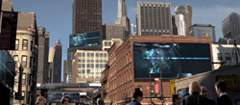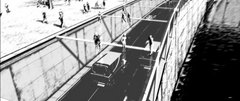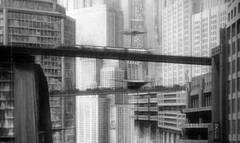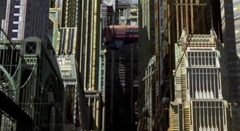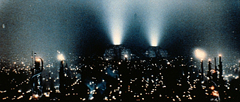
In the 1927 version of Metropolis, a city existing around the year of the 2000 is presented. The intent was to design a believable city of the future. The city it presents is enormous, portraying an urban scale that is far greater then anything that existed at its time. Massive towers stand in close proximity to each other. Extensive transportation networks run through the metropolis. In the film their is a clear fascination with the potential size of the urban environment.
In the 2001 version of Metropolis, an even greater urban scale is envisioned. The cinematography is a bombardment of the industrialized urban environment. There is little differentiation between inside and outside but rather the whole movie seems to take place within one massive urbanized complex. Similar to its predecessor of 1927, a major percentage of this metropolis exists below ground level. The subterranean world is revealed to a much greater extent in the later version as the action of the film passes through its multiple zones. In Metropolis (Tezuka 2001), the relationship of human scale to urban scale is unfathomable.
Blade Runner
begins with the depiction of Los Angeles in the future through a series
of aerial angles. The scenes are dark and no boundary to the urban environment
is apparent. In the movie, neither the city itself nor any other city
on earth is referenced. However, the viewer is informed of off-world colonies
through advertisements. The audience is encouraged to speculate that the
entire world is one global urban environment. This speculated urban globe
is uncanny even though many people live their lives primarily within a
city. The two primary reasons for this are that there is no escape from
the human construct and because this speculation is so plausible.







